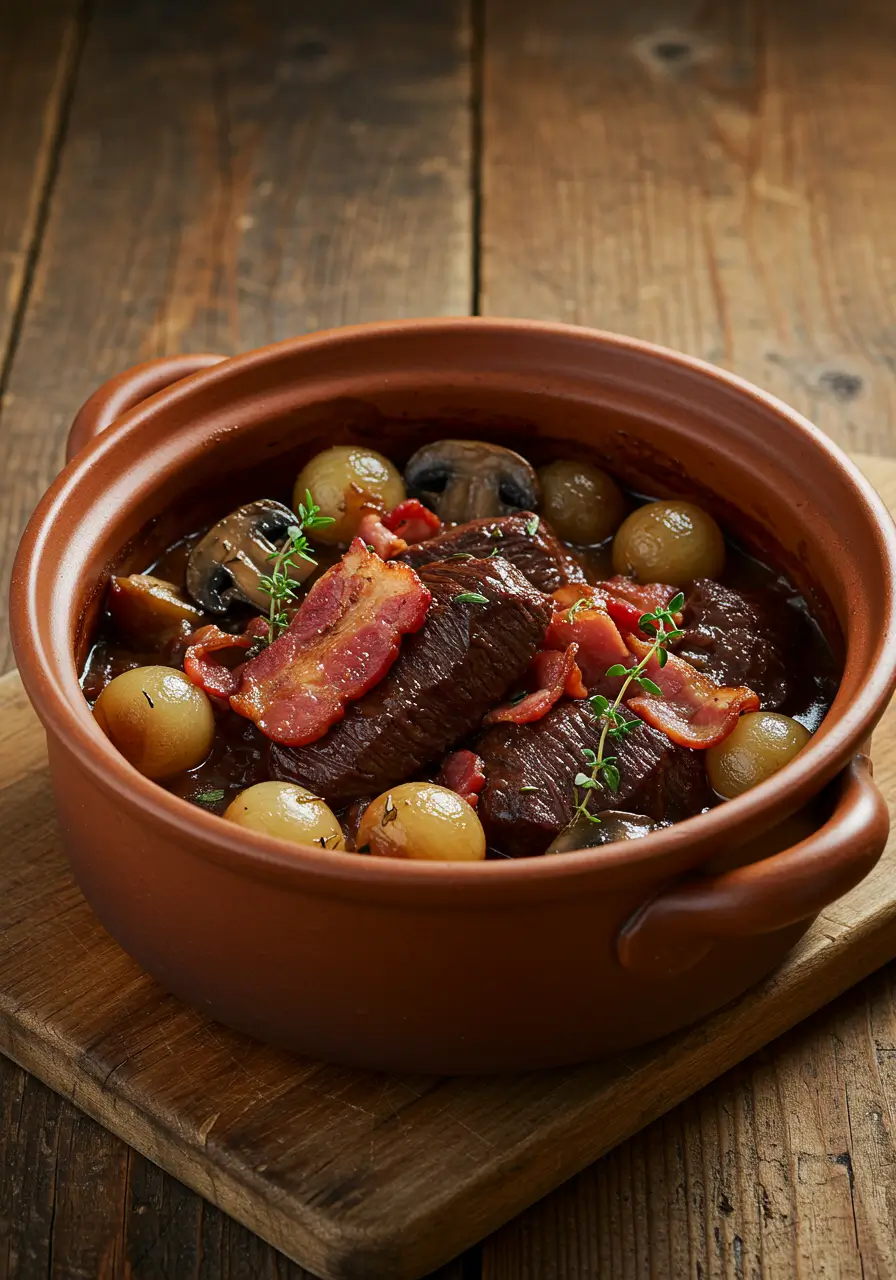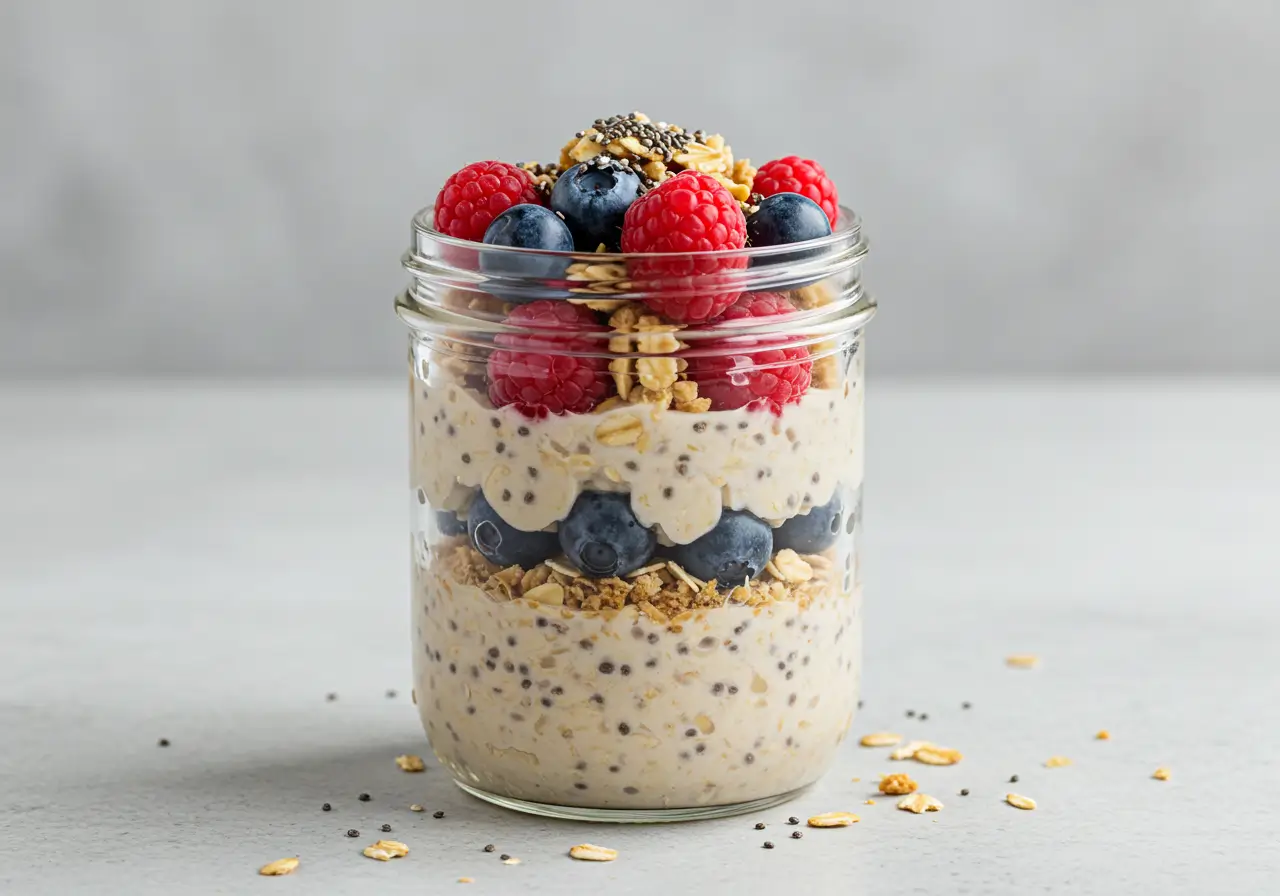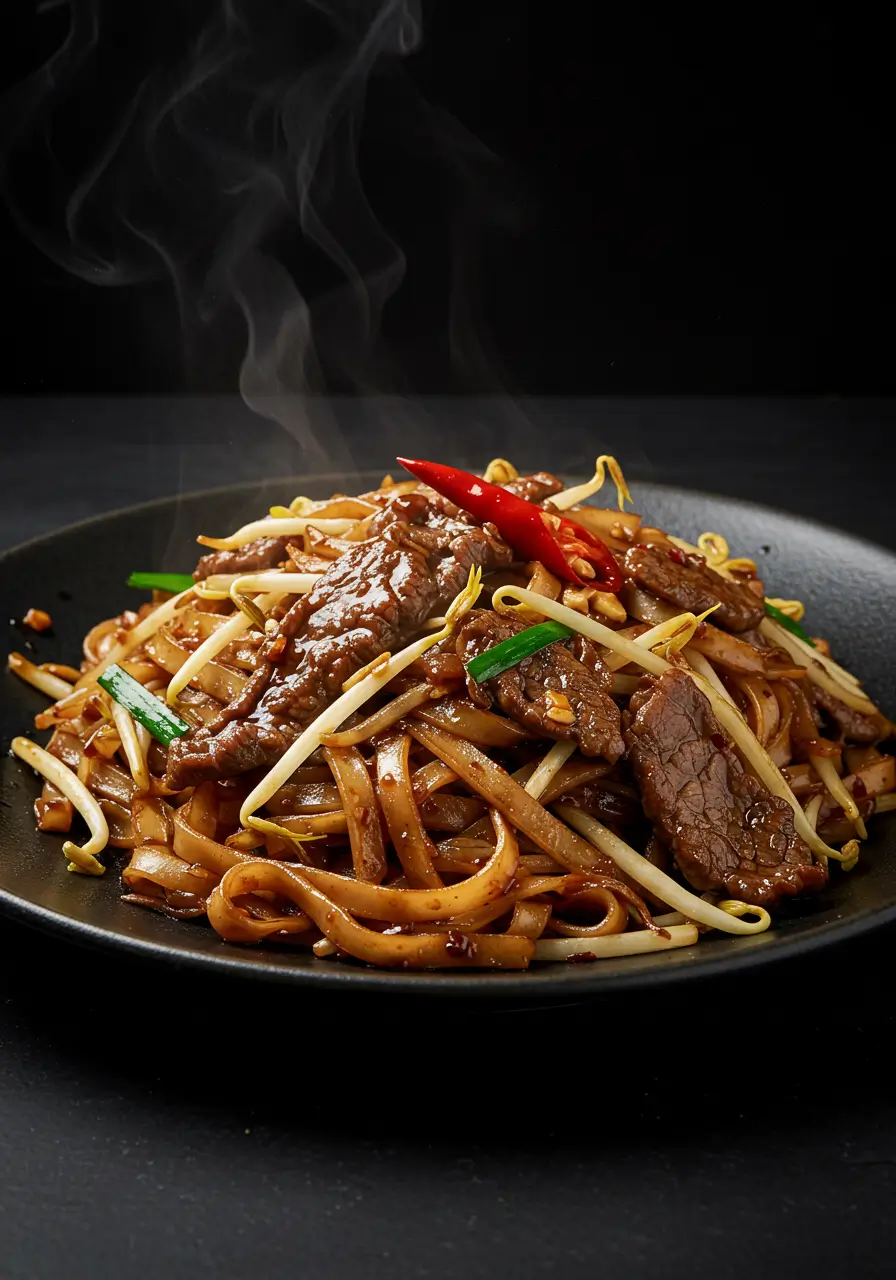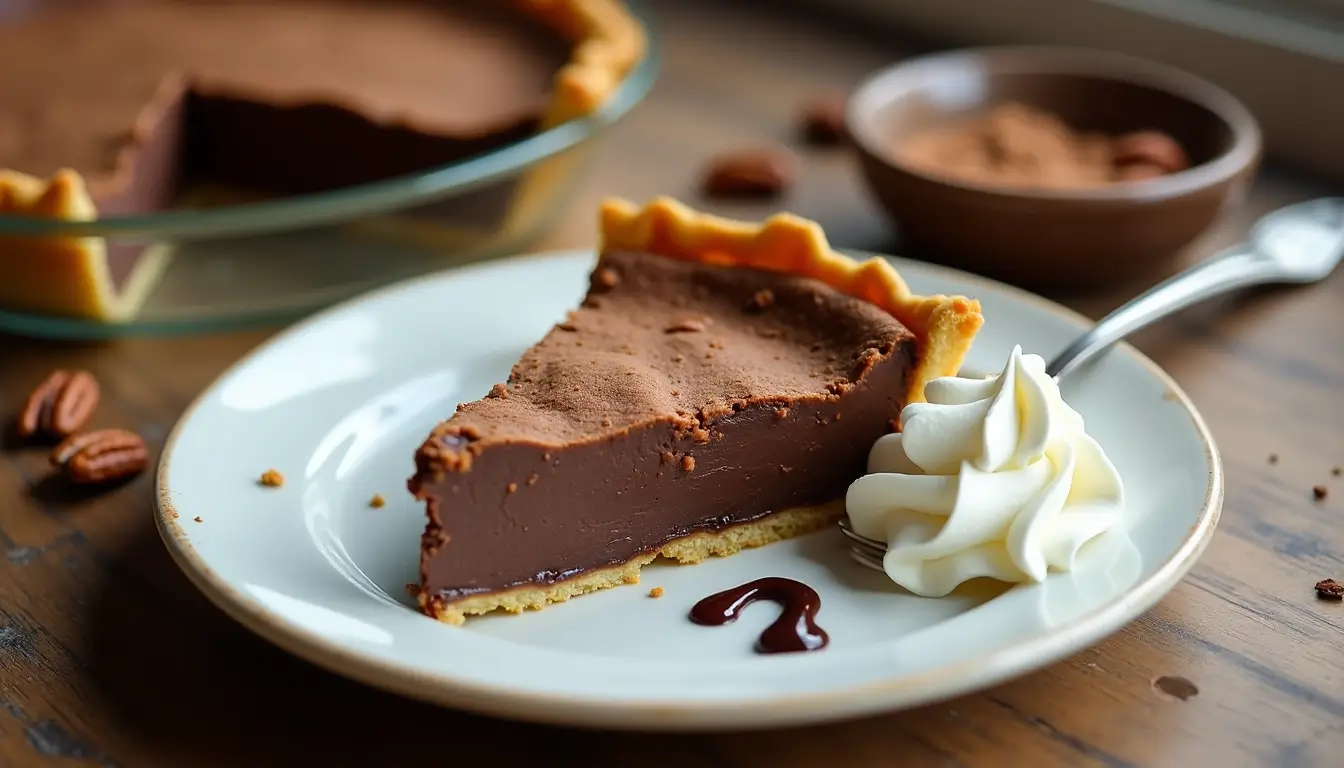roast pork with crackling
A perfect roast pork with crackling needs just 15 minutes of prep time. I found this simple truth after many attempts. The whole process takes only 3 hours, which makes it perfect for a weekend dinner.
The secret lies in temperature control and timing. Start at 240°C for 30 minutes, then drop to 200°C. Let the skin dry overnight and add plenty of salt. These steps help create restaurant-quality crackling right in your kitchen. A boneless pork loin or shoulder joint works best because its fat content ensures juicy meat and crispy crackling.
My recipe shows you everything about getting that perfect crispy crackling consistently. I’ve spent years getting this classic dish just right and now you can benefit from all my kitchen experiments.
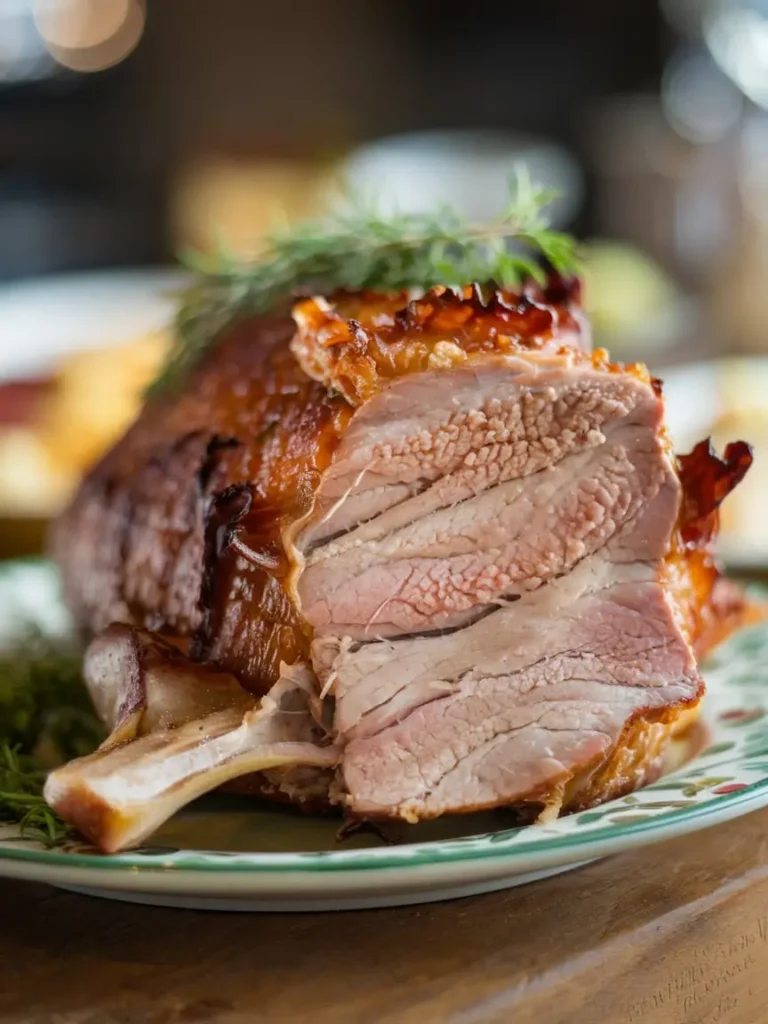
Before You Get Starte:
Getting the perfect roast pork with crackling starts with proper preparation. Let me share everything you need to know to make this dish a soaring win.
Key Tips:
The night before, these significant steps will make a huge difference:
- Pat the pork skin completely dry with paper towels
- Score the skin in diagonal lines about 1cm apart
- Place the meat uncovered in the fridge overnight
- Remove from fridge 1 hour before cooking
- Rub with olive oil and generous amounts of salt
Temperature control plays a vital role in the cooking process. Your oven needs to be perfectly preheated to 240°C before the pork goes in. The right size roasting pan makes a big difference – a pan that’s too large will burn the meat juices, while one that’s too small won’t let the crackling crisp up properly.
I found that there was a detail many people miss – proper positioning. The pork needs to sit on a wire rack inside your roasting pan so hot air can circulate underneath. The first 30 minutes are critical, so don’t add any water to the pan during this time.
A meat thermometer is your best friend for this recipe. Years of experience have taught me that guessing cooking times rarely works out well.
What Makes This Recipe So Good?
I’ve found that the magic of this roast pork recipe comes from how the textures and flavors work together perfectly. The crackling should have a golden brown surface with visible bubbles that creates an irresistibly crispy texture and makes every bite memorable.
This recipe stands out because it gives consistent perfect results every time. Here’s what makes it special:
- The skin gets incredibly crispy when you dry and salt it properly
- The meat stays tender and juicy
- Natural fat content boosts the flavors
- The cooking method gives even heat distribution
Quality pork makes a huge difference, and with good reason too. I get the best results with a boneless shoulder joint that has good fat marbling. You’ll definitely notice the difference between premium and cheaper cuts – cheaper ones usually have added water, which then ruins the crackling quality.
My cooking method is carefully adjusted – high heat seals the meat and locks in the juices, followed by a lower temperature that lets the meat become perfectly tender. This approach will give a precise internal temperature of 62 degrees celsius, and you’ll see clear juices running from inside.
Why I Love This Recipe:
This roast pork with crackling recipe caught my eye because it offers amazing value for money. The dish hits that sweet spot between being budget-friendly and absolutely impressive.
The dish amazes me with its versatility every time. Nothing beats bringing the whole roast to the table and watching everyone pull at the tender meat while trying different sauces. These are some of my favorite ways to serve it:
- As a filling for Cuban sandwiches with coleslaw
- In tacos and empanadas
- Mixed into hearty soups and stews
- Topped on ramen or noodle bowls
My guests’ reactions make it all worthwhile. The crackling shatters into crispy shards to reveal tender, juicy meat beneath – creating an unforgettable dining experience.
The recipe’s reliability makes it extra special. This cut might be one of the cheapest at the butcher’s counter, yet it becomes one of the most glorious festive centerpieces imaginable. The preparation stays simple and straightforward – you get perfect results just by following the steps.
This dish shines in its power to bring people together. Sunday roasts, mid-week dinners, or casual get-togethers – the roast pork with crackling never fails to impress. I reach for this recipe whenever I’m entertaining because it’s almost impossible to mess up.
Recipe Variations
Roast pork with crackling adapts beautifully to different flavor profiles. My experiments with many variations have taught me some excellent combinations that work every time.
Asian flavor enthusiasts might appreciate a Chinese 5 spice rub on both meat and fat before cooking. Alternatively, you could roast it plain and season the shredded meat later to keep your serving options open.
These sauce combinations are my favorites:
- Sweet and spicy nuoc cham
- Chinese-style char sui
- Cuban mojo
- Memphis-style barbecue sauce
- Argentinian chimichurri
This versatile dish pairs wonderfully with different pork cuts. Both pork belly and pork loin have given me great results. Pork belly stands out especially when you have leftovers since it reheats perfectly the next day while the crackling stays crispy.
You can create unique flavor profiles by experimenting with herbs. The simple seasonings can be swapped with combinations of rosemary, sage, thyme, and oregano. The side dishes offer plenty of variety too – Asian-inspired options like pak choi or other Asian cabbages complement the dish perfectly.
The meat’s versatility shines through in various dishes. You can use the shredded portions in sandwiches with coleslaw, taco fillings, Cuban sandwiches, or stuff them into empanadas and arepas.
Equipment
My favorite roast pork recipe needs just a few simple kitchen tools. Success comes from having the right equipment, not fancy gadgets.
Here are the items I use that give perfect results:
- A sturdy roasting pan with fixed handles and 3-inch high sides
- A reliable meat thermometer (preferably thin-stemmed instant-read)
- Heavy-duty rimmed baking sheets
- A wire rack that fits inside your roasting pan
- Kitchen twine for trussing
- Sharp knife for scoring the skin
A good roasting pan is vital. The pan’s stainless-steel surface makes it easier to monitor the drippings. You can use a large casserole dish with some rolled-up aluminum foil as a makeshift rack if you don’t have a proper roasting pan.
The meat thermometer becomes your best friend during this process. It removes the guesswork from cooking times and will give you perfectly cooked pork every time. A digital instant-read thermometer is worth the investment because it provides quick, accurate readings.
Don’t worry if you lack special equipment – this recipe works beautifully without fancy tools. You just need a pan that allows proper air circulation and heat distribution. I found that placing the pork on a bed of roughly chopped onions and garlic works well if your pan doesn’t have a rack. This method not only lifts the meat but adds incredible flavor to the pan juices.
Ingredients
Let me share the exact ingredients I use to make perfect roast pork with crackling. The dish’s success depends on using precise quantities and quality ingredients.
For the roast pork:
- 2.2 – 2.5 kg boneless pork shoulder joint
- 2 cloves minced garlic
- 1 teaspoon fresh thyme leaves (or ½ teaspoon dried thyme)
- 1 tablespoon fresh parsley, finely chopped (or ½ teaspoon dried parsley)
- ¼ teaspoon black pepper
- 1 tablespoon sea salt
For the gravy:
- Meat juices from your roasted pork
- 3 crumbled chicken stock cubes
- 720 ml (3 cups) hot vegetable stock
- ¼ teaspoon each of salt and black pepper
- 2 tablespoons cornflour mixed with 5 tablespoons cold water
- ¼ teaspoon gravy browning (optional)
We selected pork with a good thickness of fat underneath the skin – at least 0.5-1cm will give a perfect crackling. The meat’s ideal ratio should be 2:1 meat-to-fat. This balance creates juicy meat and crispy crackling.
Pro tip: My butcher’s professional knives make precise cuts without damaging the meat, so I always ask them to score the skin.
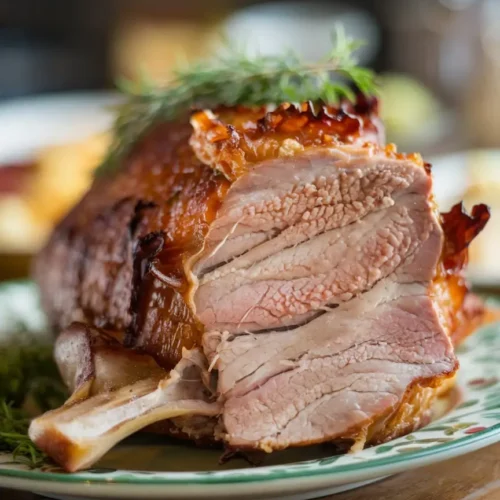
Roast Pork with Crackling:
Equipment
- A sturdy roasting pan with fixed handles and 3-inch high sides
- A reliable meat thermometer (preferably thin-stemmed instant-read)
- Heavy-duty rimmed baking sheets
- A wire rack that fits inside your roasting pan
- Kitchen twine for trussing
- Sharp knife for scoring the skin
Ingredients
For the roast pork:
- 2.2 – 2.5 kg boneless pork shoulder joint
- 2 cloves minced garlic
- 1 teaspoon fresh thyme leaves or ½ teaspoon dried thyme
- 1 tablespoon fresh parsley finely chopped (or ½ teaspoon dried parsley)
- ¼ teaspoon black pepper
- 1 tablespoon sea salt
For the gravy:
- Meat juices from your roasted pork
- 3 crumbled chicken stock cubes
- 720 ml 3 cups hot vegetable stock
- ¼ teaspoon each of salt and black pepper
- 2 tablespoons cornflour mixed with 5 tablespoons cold water
- ¼ teaspoon gravy browning optional
Instructions
- Here’s my proven method to make perfect roast pork with amazing crackling. Let me share exactly how I do it:1 – I start by heating my oven to 220°C. The first step is pouring boiling water over the scored pork skin while it sits on a plate in the sink. This helps the score marks open up nicely.2 – I dry the skin completely with paper towels and put the pork on a baking tray that has medium-high sides. The tray’s height is vital since the pork releases quite a bit of liquid fat as it cooks.3 – Salt gets rubbed really well into the skin, especially into all those score marks. The pork goes on the top shelf of my oven to cook for 20-30 minutes.I usually check how it’s browning around the 20-minute mark. 4 – The temperature needs adjusting up or down based on how the color develops.My experience shows these visual signs mean it’s cooking perfectly: – A beautiful golden color everywhere. – The skin bubbles up evenly. – You can clearly see the score marks.The pork needs to rest for 15-20 minutes before I start carving. You can’t skip this resting time if you want juicy meat. A loose foil cover keeps everything warm, and amazingly, the crackling stays crispy even after several hours.Pro tip: Sometimes parts of the skin crisp up faster than others. I fix this by using small foil patches held in place with toothpicks while the rest catches up.
Notes
- The crackling needs more crispiness? Just turn up the heat for 10-15 minutes
- Make sure the skin is completely dry before cooking
- Add all the salt specified – this helps the crackling puff up properly
- Score the skin well or let your butcher handle it
Instructions
Here’s my proven method to make perfect roast pork with amazing crackling. Let me share exactly how I do it:
- I start by heating my oven to 220°C. The first step is pouring boiling water over the scored pork skin while it sits on a plate in the sink. This helps the score marks open up nicely.
- I dry the skin completely with paper towels and put the pork on a baking tray that has medium-high sides. The tray’s height is vital since the pork releases quite a bit of liquid fat as it cooks.
- Salt gets rubbed really well into the skin, especially into all those score marks. The pork goes on the top shelf of my oven to cook for 20-30 minutes.
- I usually check how it’s browning around the 20-minute mark. The temperature needs adjusting up or down based on how the color develops.
My experience shows these visual signs mean it’s cooking perfectly:
- A beautiful golden color everywhere
- The skin bubbles up evenly
- You can clearly see the score marks
The pork needs to rest for 15-20 minutes before I start carving. You can’t skip this resting time if you want juicy meat. A loose foil cover keeps everything warm, and amazingly, the crackling stays crispy even after several hours.
Pro tip: Sometimes parts of the skin crisp up faster than others. I fix this by using small foil patches held in place with toothpicks while the rest catches up.
FAQs
To get perfect crackling, thoroughly dry the pork skin, score it, and rub in plenty of salt. Start cooking at a high temperature (240°C) for the first 30 minutes, then reduce to 200°C. Ensure the pork is on a wire rack to allow air circulation.
To maintain crispy crackling, dry the pork skin thoroughly before cooking by leaving it uncovered in the fridge overnight. During cooking, avoid adding water to the roasting pan for the first 30 minutes. When resting the meat, don’t cover it tightly to prevent steam from softening the crackling.
Cooking time varies based on the size of the roast. For a 2.2-2.5 kg boneless pork shoulder, plan for about 2 hours total cooking time. This includes 30 minutes at high heat (240°C) for crackling, followed by about 90 minutes at a lower temperature (200°C) to cook the meat through.
A boneless pork shoulder joint with good fat marbling is ideal for roast pork with crackling. Look for meat with a 2:1 meat-to-fat ratio and a fat layer of at least 0.5-1cm thick under the skin. This balance ensures both juicy meat and crispy crackling.
Store any leftover roast pork in an airtight container in the refrigerator. Unlike store-bought versions, homemade crackling should never be stored at room temperature. When reheating, separate the crackling from the meat to maintain its crispiness.

